Lifestyle
Basel blends history, art, industry at Europe’s crossroads
Basel will be in the international spotlight for a week of festivities surrounding the Eurovision Song Contest, but the Swiss city has already been at the heart of European culture for centuries.
With a population of 180,000, Switzerland’s third-biggest city after Zurich and Geneva straddles the River Rhine and sits on the northern border with both France and Germany.
Basel’s location played a major role in its growth and continental importance through the ages.
From May 11 to 17, it will be center-stage in Europe again as it hosts Eurovision 2025, the pop music extravaganza that has become one of the world’s biggest annual live television events and a giant international party.
The influence of the Rhine can be felt in Basel’s historic center, dominated by the twin towers of Basel Minster, where the Dutch thinker Erasmus is buried.
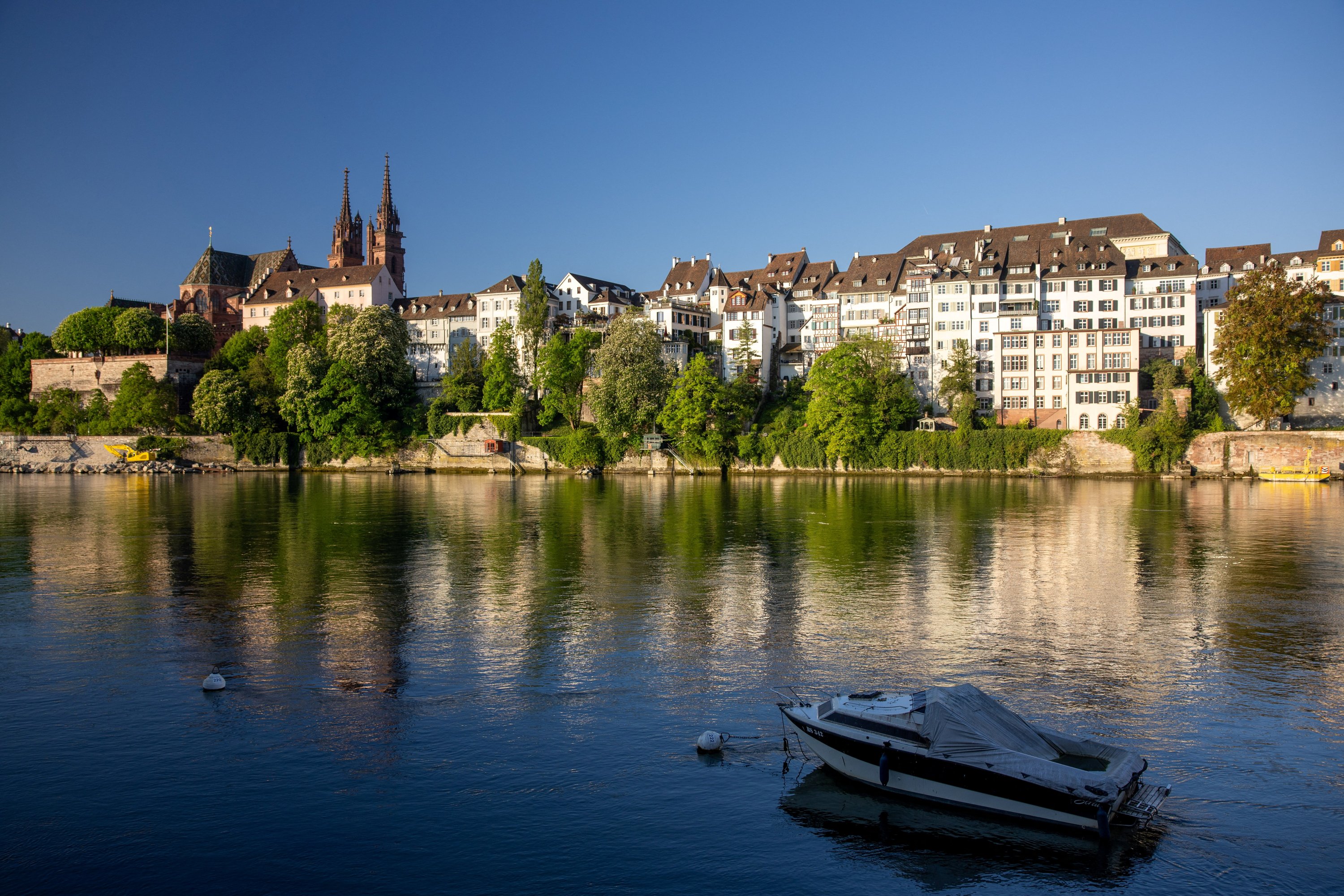
But Basel’s modern emblems are the two Roche Towers, Switzerland’s tallest buildings. Completed in the last decade, standing 205 meters and 178 meters (673 and 584 feet) high, they are the headquarters of the eponymous giant pharmaceutical firm.
The chemical and pharmaceutical industries now drive the city’s economy.
Carnival and the arts
Basel is one of Europe’s great cultural centers.
The first edition of Sebastian Brant’s “Ship of Fools,” one of the best sellers of the European Renaissance, was printed in the city.
The Rhine spirit is vividly expressed every spring at the three-day Basel Carnival, which transforms the city streets into a river of painted lanterns, colorful masks and creative costumes, flowing to the sound of pipes and drums.
The world’s biggest Protestant carnival features on UNESCO’s intangible cultural heritage list and attracts thousands of tourists.
The city has world-renowned museums – none more so than the Kunstmuseum, the oldest public art collection in the world, dating back to 1661.
In a referendum in 1967, citizens decided to buy two paintings by Pablo Picasso, who, moved by the vote, would later donate several more works to the city.
Across the Rhine, the Museum Tinguely draws in thousands of visitors with its kinetic art sculptures, while just outside the city, the Beyeler Foundation hosts an outstanding collection of modern and contemporary artworks.
And every year, art lovers and gallery owners from around the world flock to Art Basel, one of the world’s top contemporary art fairs.
In sports, Basel is home to tennis all-time great Roger Federer, while FC Basel is on the verge of winning their 21st Swiss football championship.
Chemicals and quakes
Besides its culture, Basel is now synonymous with the chemical and pharmaceutical industries, home to globally important groups such as Roche, Novartis, Sandoz and Syngenta.
Pharma and chemicals make Basel a major player in the Swiss economy, attracting researchers and students as well as cross-border workers.
Around 35,000 people cross over from France and Germany, attracted by higher Swiss wages.
Basel is the home of the Bank for International Settlements, considered the central bank of central banks.
The city is left-leaning, perhaps due to the influence of its university, the oldest in Switzerland, founded in 1460.
It has approximately 13,000 students from 100 countries, around a quarter of whom are studying for their doctorates.
The city has also lived through major disasters: the great earthquake of 1356 and the Sandoz chemical spill 630 years later.
The biggest quake in central Europe in recorded history, and the fires it caused, destroyed a city already ravaged by the Black Death.
The 1986 fire at the Sandoz chemical plant on the outskirts of Basel also left its mark due to the ecological disaster caused by toxic chemicals leaking into the Rhine, killing wildlife as far downstream as the Netherlands.
Lifestyle
National Geographic highlights magic of Cappadocia
The world-renowned media organization National Geographic has garnered international attention to the heart of Cappadocia, a popular tourist destination in central Türkiye, through a captivating video shared on its Instagram account, which boasts over 46 million followers.
The video, a visual celebration of the region, features everything from vibrant hot air balloons painting the skies to centuries-old rock-carved churches and offers viewers a breathtaking glimpse into Cappadocia’s otherworldly beauty.
But it’s not just about the visuals. The production also highlights efforts to preserve Cappadocia’s cultural and natural heritage, a message that resonated deeply with viewers and earned widespread praise across social media.
Cem Aslanbay, director of the Cappadocia Area Presidency, emphasized the importance of this global exposure, calling it a milestone for the region.
“Cappadocia is not merely a land that holds the traces of the past – it is a universal heritage to be passed on to the future. Being featured on such a prestigious platform as National Geographic gives us a unique opportunity to share this legacy with the world,” he explained.
Aslanbay also stressed that the significance of this feature goes beyond tourism. It serves as a critical moment for raising awareness around sustainability and cultural preservation.
“We view such international promotions not only as tourism invitations, but also as key opportunities to highlight the need for protecting our cultural heritage and ensuring its transmission to future generations,” he said.
In alignment with the strategic goals set by the Ministry of Culture and Tourism, the Cappadocia Area Presidency affirms that its promotional efforts will continue uninterrupted – striving to spotlight every corner of this extraordinary landscape.
Lifestyle
Nature lovers find refuge in Bosnia’s Blidinje Park, Dreznica River
With the arrival of summer, Blidinje Nature Park and the Dreznica River – two of Bosnia-Herzegovina’s hidden natural treasures – are emerging as top destinations for both domestic and international tourists.
Visitors seeking to escape the crowds are increasingly drawn to the serene landscapes of southern Bosnia-Herzegovina, where Blidinje and Dreznica offer pristine nature and tranquility.
Declared a nature park in 1995, Blidinje is nestled between the Cvrsnica and Vran mountains. It has become one of the country’s most visited spots thanks to its rich biodiversity and scenic surroundings.
The park is also home to Blidinje Lake, the largest mountain lake in Bosnia-Herzegovina. Its fresh air and unspoiled environment make it a popular summer retreat.
Among Blidinje’s key attractions are 150 medieval tombstones, known locally as “stecci.” These ancient stone monuments, designated as a National Monument of Bosnia-Herzegovina, offer visitors a glimpse into the region’s storied past.
Located near the towns of Jablanica and Mostar, the park attracts hiking enthusiasts, many of whom ascend Cvrsnica Mountain to reach Hajduk Gate –a natural rock formation that offers breathtaking views from the summit.
Turquoise waters
North of Mostar, the Dreznica River winds through dense forests and rugged cliffs, mesmerizing visitors with its turquoise waters and crystal-clear streams.
A tributary of the Neretva River, Dreznica has gained attention in recent years as one of the country’s hidden jewels. While long cherished by locals, it has become a favorite among tourists as well.
The river, which creates natural pools among the rocks, is often described as “magical” by those who visit. Nearby, travelers can also explore three waterfalls, each ranging from 10 to 12 meters (33 to 39 feet) in height.
Dreznica offers a peaceful setting, far from the noise and bustle of city life – a place where nature lovers can relax and reconnect with the outdoors. The area continues to attract a growing number of visitors each year.
As they explore southern Bosnia-Herzegovina, tourists are increasingly venturing beyond the well-known sites to discover the country’s lesser-known natural wonders.
Lifestyle
Planning Paros: Traveler’s guide to Greece’s chicest island escape
Located in the southeast of Greece, nestled among the Cyclades Islands, Paros is emerging as a true gem of the Aegean. As the third largest island in the Kyklades group, Paros is a harmonious blend of nature and elegance. Imagine beaches where every shade of blue dances in crystal clear waters, valleys blanketed with vineyards and olive groves, charming fishing villages and postcard-perfect white and pastel-hued houses. This is where simplicity meets sophistication.
You can reach Paros from Istanbul via a connecting flight through Athens with Turkish Airlines (THY) and its Star Alliance partners on one itinerary, or you can book your tickets separately: one for the Istanbul-Athens leg and another for the Athens-Paros flight.
Paros is well connected via a small domestic airport, linking effortlessly to Athens and Thessaloniki through reliable carriers like Aegean Airlines and Sky Express. The flight from Athens takes just 45 minutes, making it a quick escape. In high season, daily flights are frequent, but booking ahead is a smart move as seats tend to sell out fast.
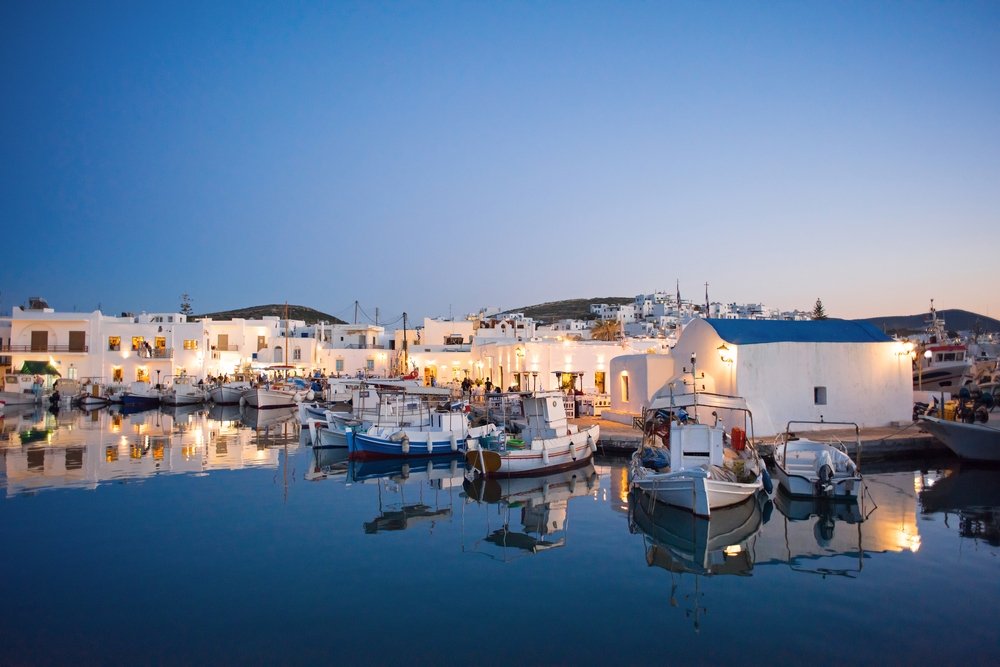
For a slower, scenic journey, ferries to Paros from Athens is a great option. Depending on the route, the ferry ride takes around three to 4.5 hours, offering a more relaxed introduction to the island’s magic.
Two souls of Paros
Paros offers something for every type of traveller. Whether you’re seeking a serene retreat, an active escape with diving and windsurfing, or a vibrant nightlife experience, Paros accommodates all moods effortlessly. The island revolves around two main hubs: Parikia, the main port and capital, and Naoussa, its lively and stylish northern village.
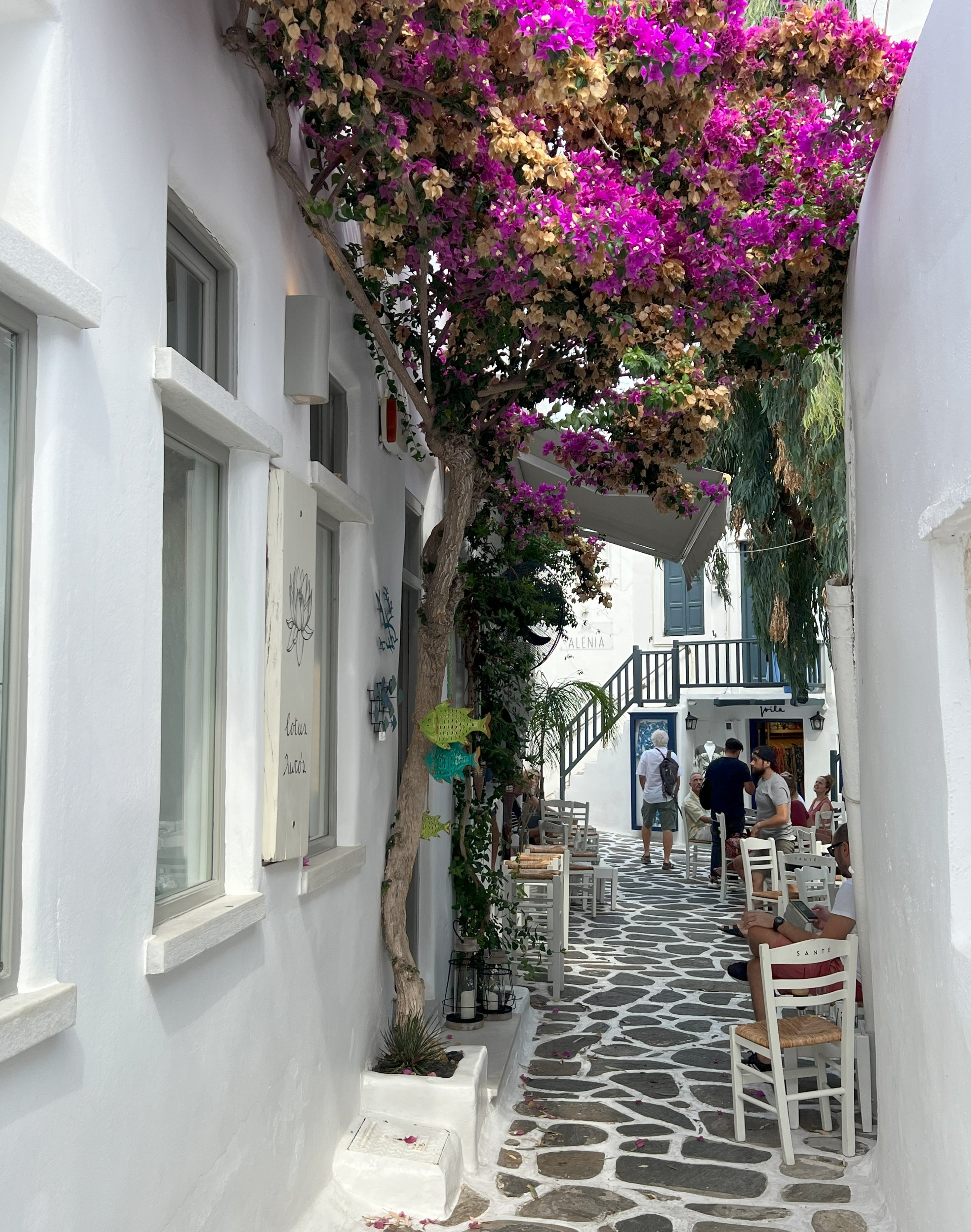
Step into Naoussa and you’re instantly transported to a Cycladic dream. With its whitewashed houses, cobblestone alleys, blue-domed churches and a harbour that glows with life, Naoussa exudes timeless Greek charm. At the port, you’ll often see freshly caught octopus hanging in the sun, while the nearby Venetian castle offers sweeping views over the village, framed by bougainvillea-covered houses and the endless Aegean. Don’t miss a walk up to Faneromeni (Panagía) Church perched on a hill, it’s the perfect sunset viewpoint with breathtaking panoramic views.
Parikia, on the other hand, is the island’s beating heart. With its traditional Cycladic architecture, picturesque promenade, golden sunsets and lively town square, it offers the perfect balance of energy and relaxation. This is where most ferries arrive, making it the practical entry point to Paros and a vibrant base for exploring the island.
At its center lies the historic Ekatontapiliani Church, the “Church of a Hundred Doors,” a Byzantine masterpiece dating back to early Christianity. Meander through Parikia’s labyrinthine streets, filled with charming shops, inviting cafes and buzzing tavernas. Nearby, several beautiful pebble sand beaches offer plenty of swimming options, while the hilltop castle built in 1260 by Duke Sanoudos adds a touch of history. Today, Parikia is home to around 5,000 year-round residents and remains the cultural and historical soul of the island.
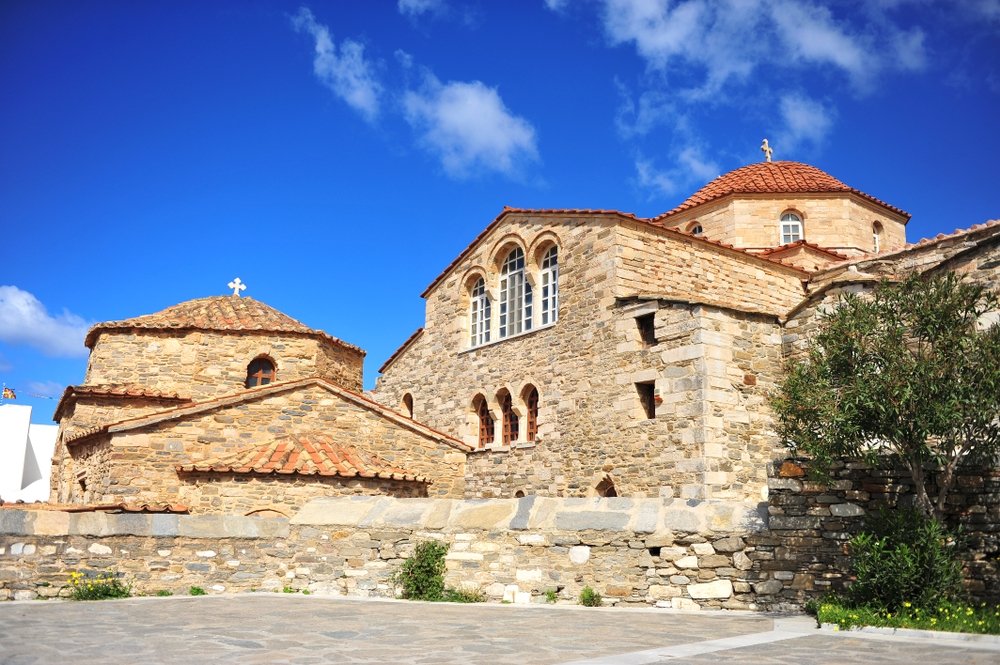
Parocks Hotel & Spa
A beacon of elegance among Paros’s luxury offerings, Parocks Hotel & Spa is a five-star boutique escape with just 40 rooms and suites, making it an ideal sanctuary for couples and honeymooners. Nineteen of the rooms boast private Jacuzzis, while 13 feature private pools. The eight spacious suites take it a step further, offering fully private plunge pools.
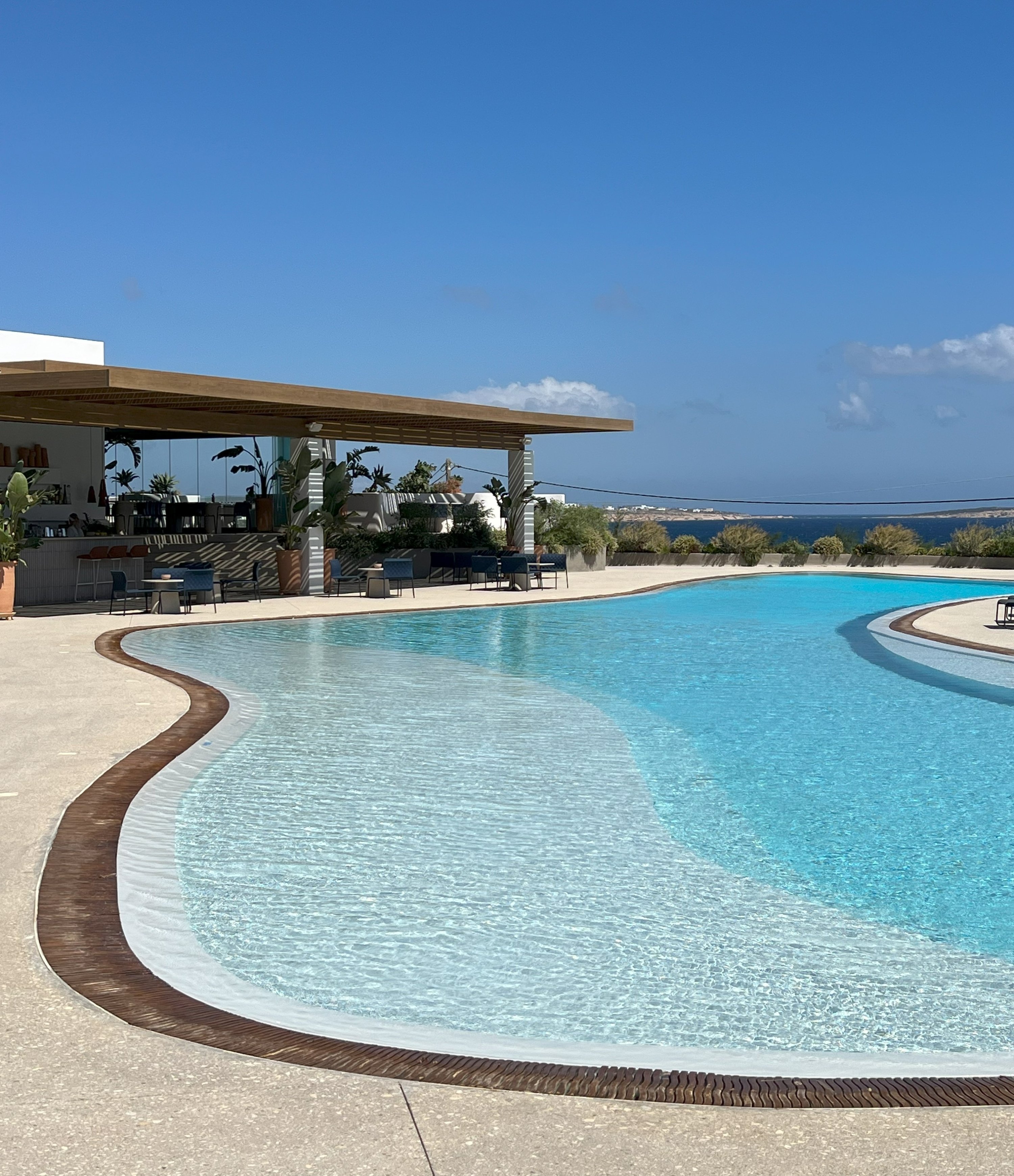
The heart of the hotel is its stunning restaurant and poolside bar the perfect spot to watch the sun dip into the sea while sipping a signature cocktail. Just 5 kilometers (3.11 miles) from Naoussa, Parocks is nestled in a peaceful corner of the island, yet close enough to the action. With its minimalist design and focus on tranquillity, it offers the perfect retreat for those seeking seclusion with a touch of indulgence.
For those wanting to explore more freely, renting a car or scooter is highly recommended. Paros is dotted with idyllic beaches and scenic coastal drives and given the limited number of taxis, having your own transport is a major plus. Parocks Hotel is located about 22 kilometers from Paros National Airport.
Andronis Minois Hotel
A newcomer to the island’s luxury hotel scene, Andronis Minois opened its doors in 2023 and is already making waves. With 44 suites and rooms, the hotel is part of the prestigious Small Luxury Hotels (SLH) collection. Located just five minutes from the airport and 10 minutes from Parikia, it offers both convenience and seclusion.
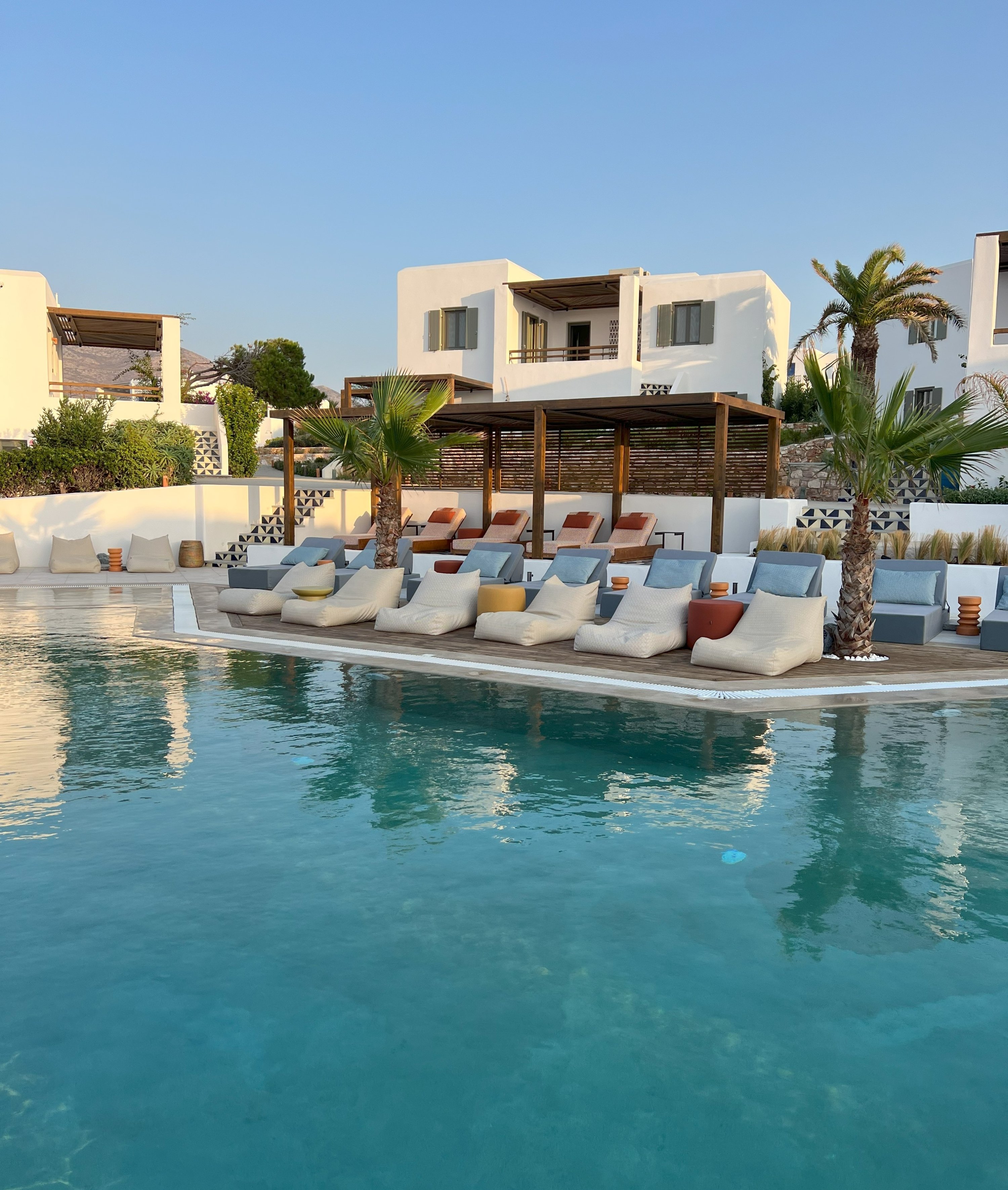
Perched on rocky cliffs near the 300-meter-long (984.25-foot-long) Parasporos Beach, the hotel offers quick access to several other beaches on the island. Rooms come with private balconies or terraces and select suites feature expansive pools and panoramic sea views.
The in-house restaurant, OLVO, is helmed by chef Tsantilas. Expect an exceptional culinary journey blending refined Greek Flavors with contemporary flair. Be sure to book a table for dinner, as the sunset here is a visual not to miss and the food is a gastronomic feast.
What makes Andronis Minois especially memorable is its warm hospitality and relaxed ambiance, it feels less like a hotel and more like your home away from home.
Lifestyle
Journey through Bangladesh’s green heart to world’s longest beach
What began as an idea to explore the world’s longest beach turned into a fabulous tour of beautiful tropical green, pastoral landscapes criss-crossed by rivers, wonderful cuisine and an exciting shopping scene.
Surprising start
I arrived in Dhaka immediately after Qurban Bayram, also known as Eid al-Adha, to escape the megacity as quickly as possible to the serene coast of Cox’s Bazar in the southeast.
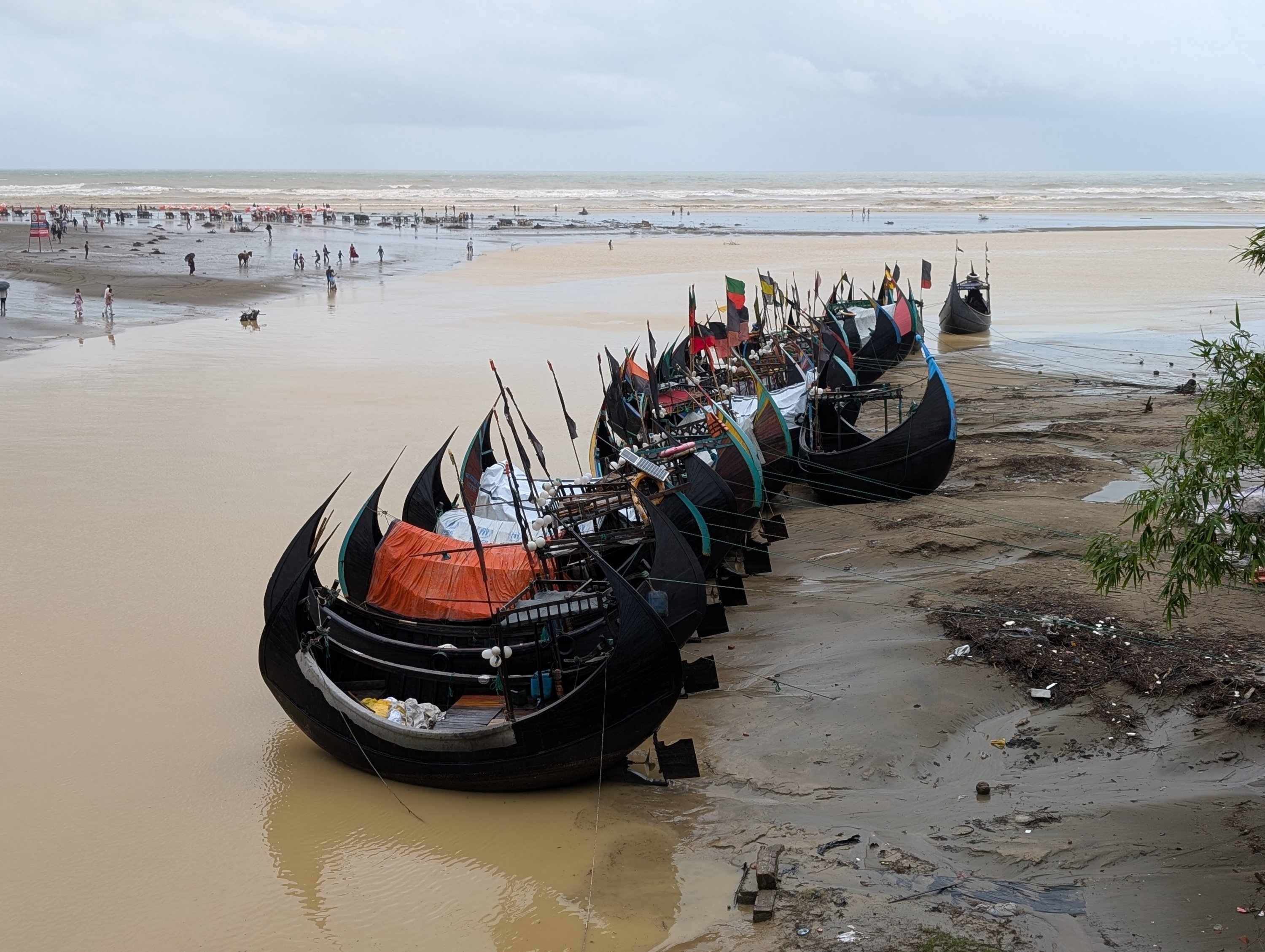
Lo and behold, despite Dhaka’s image as a traffic-clogged place, I mostly encountered clear roads. Cars zipped by in Banani and Gulshan, two of Dhaka’s top neighborhoods and battery-powered cycle rickshaws ran smoothly. These rickshaws, which were previously pedal-driven, enjoy a kind of heritage status in the metropolis of 23 million.
So, what happened to the traffic congestion Dhaka residents always complain about?
“You will see when you return from your beach holiday. Half of Dhaka is empty because of the Eid holiday,” a Bangladeshi friend told me.
It was due to holiday demand that I struggled to book a beach hotel in Cox’s Bazar in time. Combined with the weekend, it became an extended Eid holiday, so it dawned on me that I would have to cool my heels in Dhaka for a couple of days more.
City exploration
I got busy exploring the modern neighborhoods as well as Old Dhaka. Despite “half of Dhaka” being empty, the city’s famous shopping haven – comprising New Market, New Super Market, Chandni Chowk and Gausia Market – was full of people. It is a shop-till-you-drop scenario.
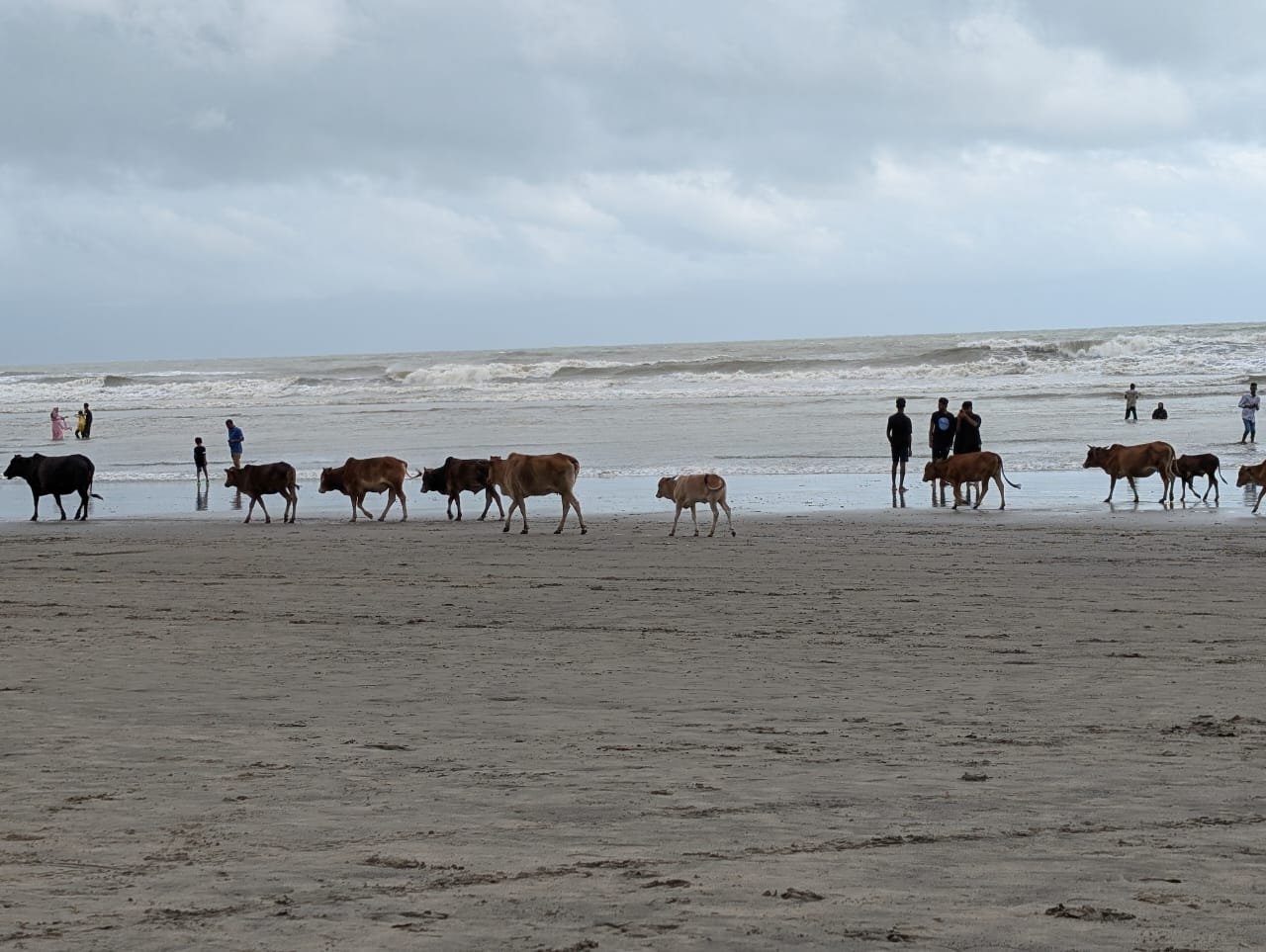
Shops and stalls in this area offer a wide range of products, including household items, garments, shoes, gifts, electronics, jewelry and books. However, eateries offering tasty quick meals and refreshments in the area will make sure your energy levels do not drop.
Dhaka’s major shopping options include Bashundhara City Mall, Jamuna Future Park (the largest mall in Bangladesh), Police Plaza Concord Shopping Mall and Pink City Shopping Complex in Gulshan. If you are not flying directly from abroad to Cox’s Bazar, then it is a good idea to travel light and buy clothes in Dhaka. Bangladesh is the world’s largest apparel exporter after China and has an extensive variety of clothing in its domestic market.
Cultural, historic gems
I also used the extra time I had in Dhaka to visit the majestic heritage site of Ahsan Manzil, where Dhaka’s erstwhile nawabs lived, Panam Nagar’s abandoned settlement and the Taj Mahal imitation near Sonargaon, a historic city about 35 kilometers (21.7 miles) from the capital.
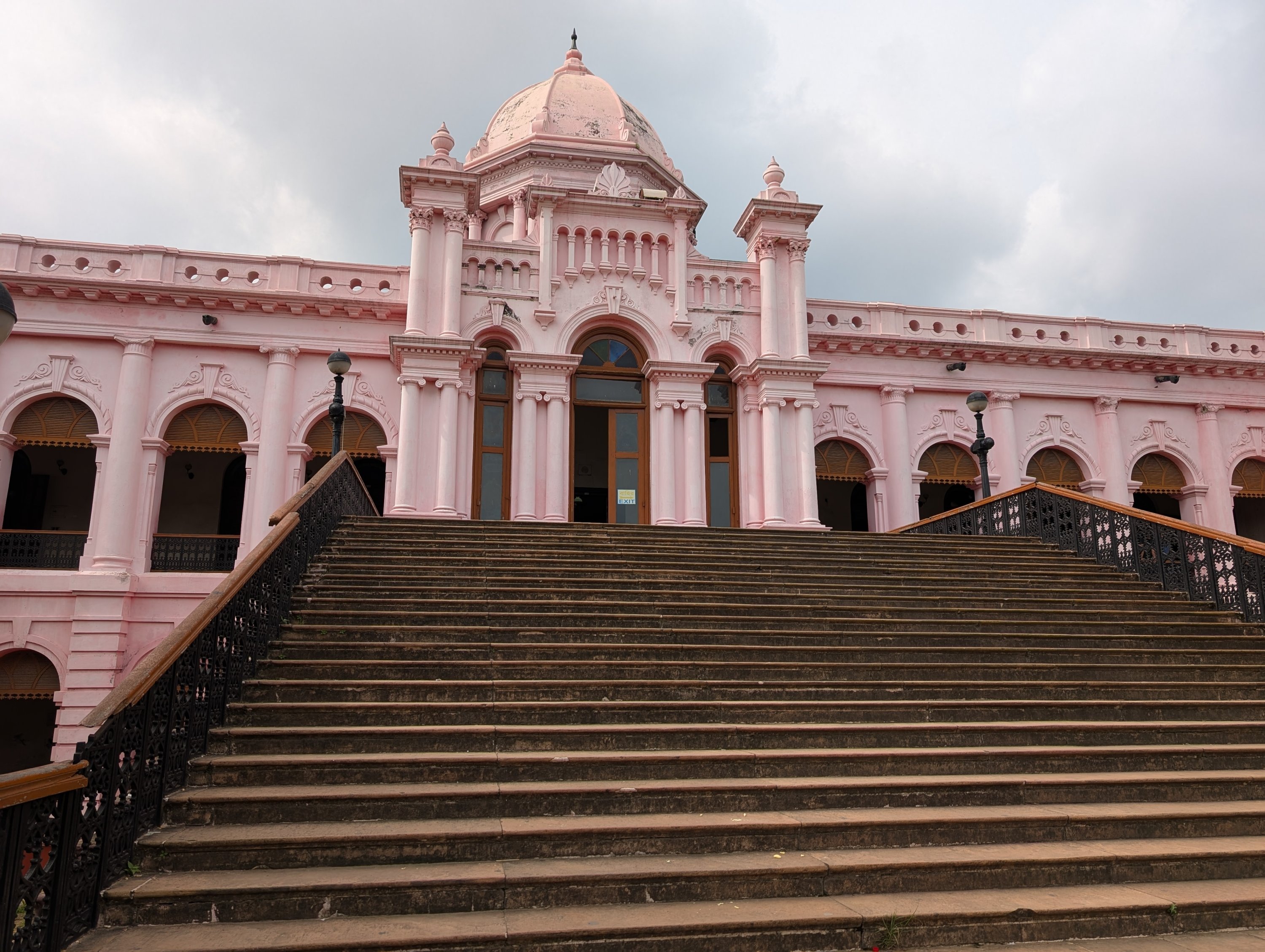
As the new week began (Sunday is the first day of the week in Bangladesh), those who had left to celebrate Eid in their hometowns began to return. Traffic in Dhaka got heavier, but I was in a lighter mood, having finally found a hotel in Cox’s Bazar’s popular hotel and motel zone.
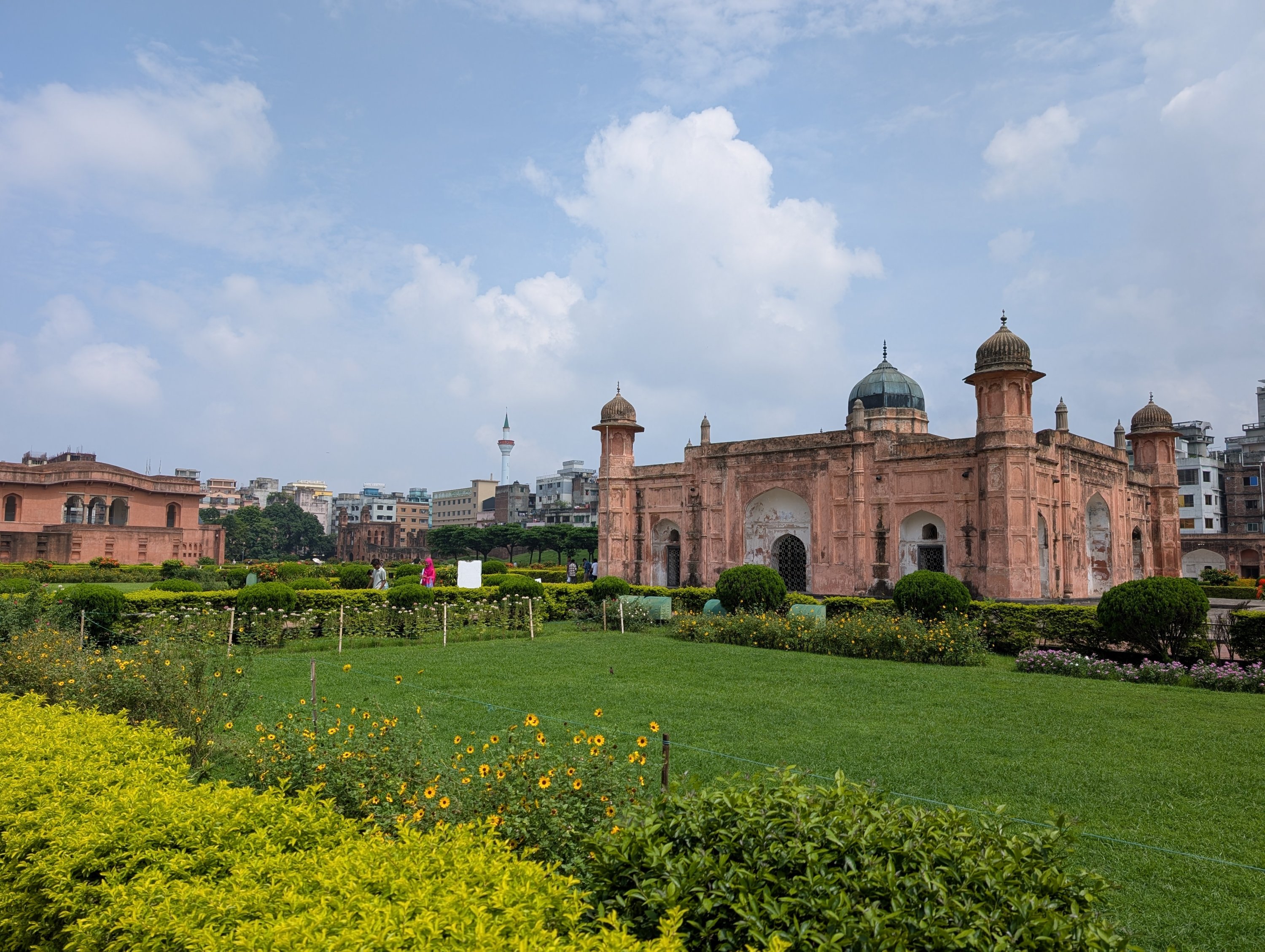
Journey to the longest beach
I traveled there on a luxury bus, with the journey through the pleasant tropical green taking more than 10 hours to cover a distance of 390 kilometers (242.34 miles). My hotel was within easy walking distance from Laboni beach. The sandy stretch between Laboni and Kolatoli beach, with Sugandha placed in the middle, is highly popular. The entire zone is designed to cater to tourists of every budget.
You can rent deck chairs to relax on the beach if you do not walk or dip your feet in the surf. Tender coconuts with high water content are readily available throughout Bangladesh, and they appear to be the freshest in the coastal regions.
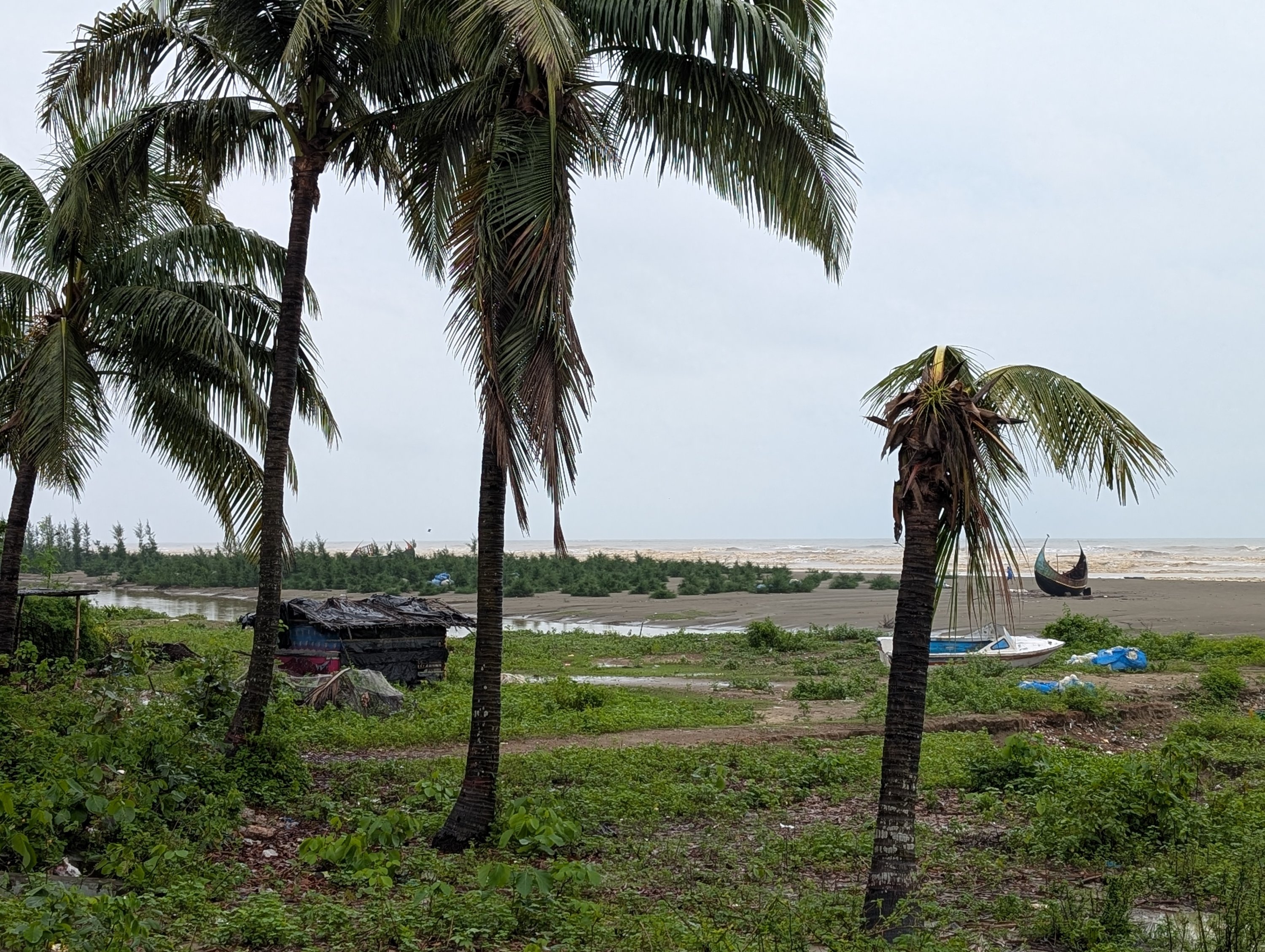
Flavors of Cox’s Bazar
Whether at hotel restaurants or in the market, you’ll find flavorful dishes showcasing local ingredients.
The Jol Torongo hotel on Laboni beach is an exciting place for Bangladeshi and Asian cuisine. Its large Bay View and Bay Terrace restaurants offer sea views and the grill shop is right next to the beach for barbecue lovers.
One of the meals I enjoyed most was lunch at Palongki restaurant. Palongki Inani lives up to its reputation of being an “authentic Bengali food restaurant.” My family and I ordered the curries (fish, beef and chicken) along with rice and the “Ashtobhuja” platter, which consists of eight types of bharta (a mashed dish) and bhaji (a vegetable dish), as suggested by restaurant manager Adnan Kabir.
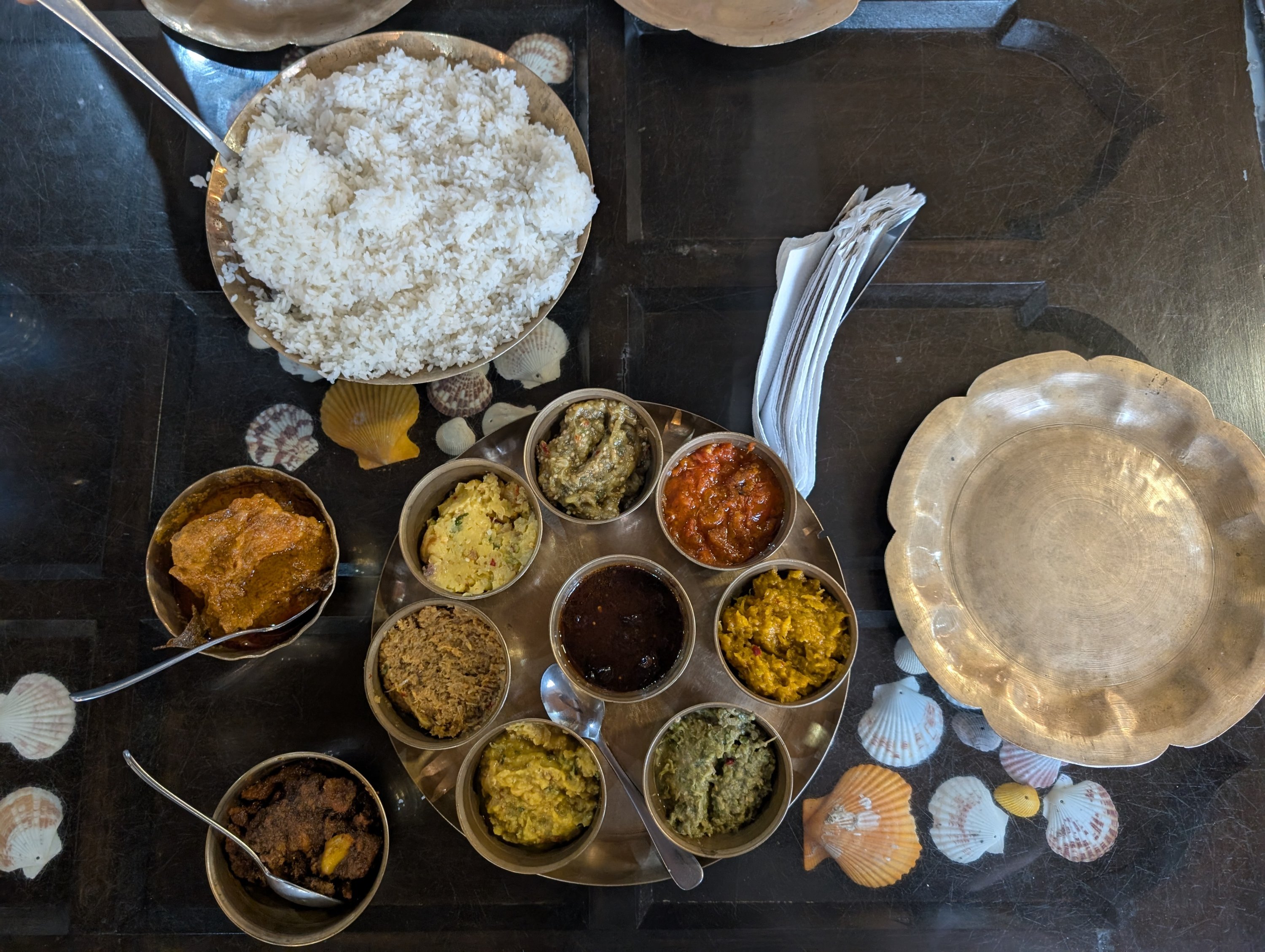
Jalebi and rasgulla (a dumpling dipped in syrup), or roshogolla, are Bengali sweets, but they tasted superb at this place. It was situated in a wonderful setting, with only the road separating the dining area from the sea.
Jafar, whose “CNG” (a motorized rickshaw) we had hired from Cox’s Bazar, seemed to know all the interesting places in the area, and the restaurant was his best recommendation.
Adnan also informed me that Palongki (also known as Palongkee) is an old name for Cox’s Bazar, which is named after Capt. Hiram Cox, an officer of the British East India Company. A market was established and named after Cox to honour him for his work in refugee rehabilitation during that time, according to information on the Bangladesh Tourism Board website.
Between beauty, crisis
While Hiram Cox lived in the 18th century, Cox’s Bazar is bravely tackling one of the biggest contemporary refugee problems. The region bordering Myanmar hosts a million refugees of the Rohingya ethnic community who have fled a campaign of genocide and ethnic cleansing in Myanmar.
Therefore, Cox’s Bazar is regularly in the news owing to developments related to the Rohingya humanitarian crisis. Various high-profile visits have highlighted the issue globally. Turkish first lady Emine Erdoğan visited in 2017 and U.N. Secretary-General Antonio Guterres was there in March 2025 on a mission of solidarity during the holy month of Ramadan.
This region, renowned for its stunning beauty, deserves wider publicity, particularly for its numerous tourist attractions.
Coastal wonders
The 30 kilometers I traveled, mostly along the coast, between Cox’s Bazar and Inani Beach, were dotted with secluded resorts and busy picnic spots amid empty sandy stretches. On one side was the alluring sea and on the other, verdant tropical vegetation. I saw some parasailing points along the way.
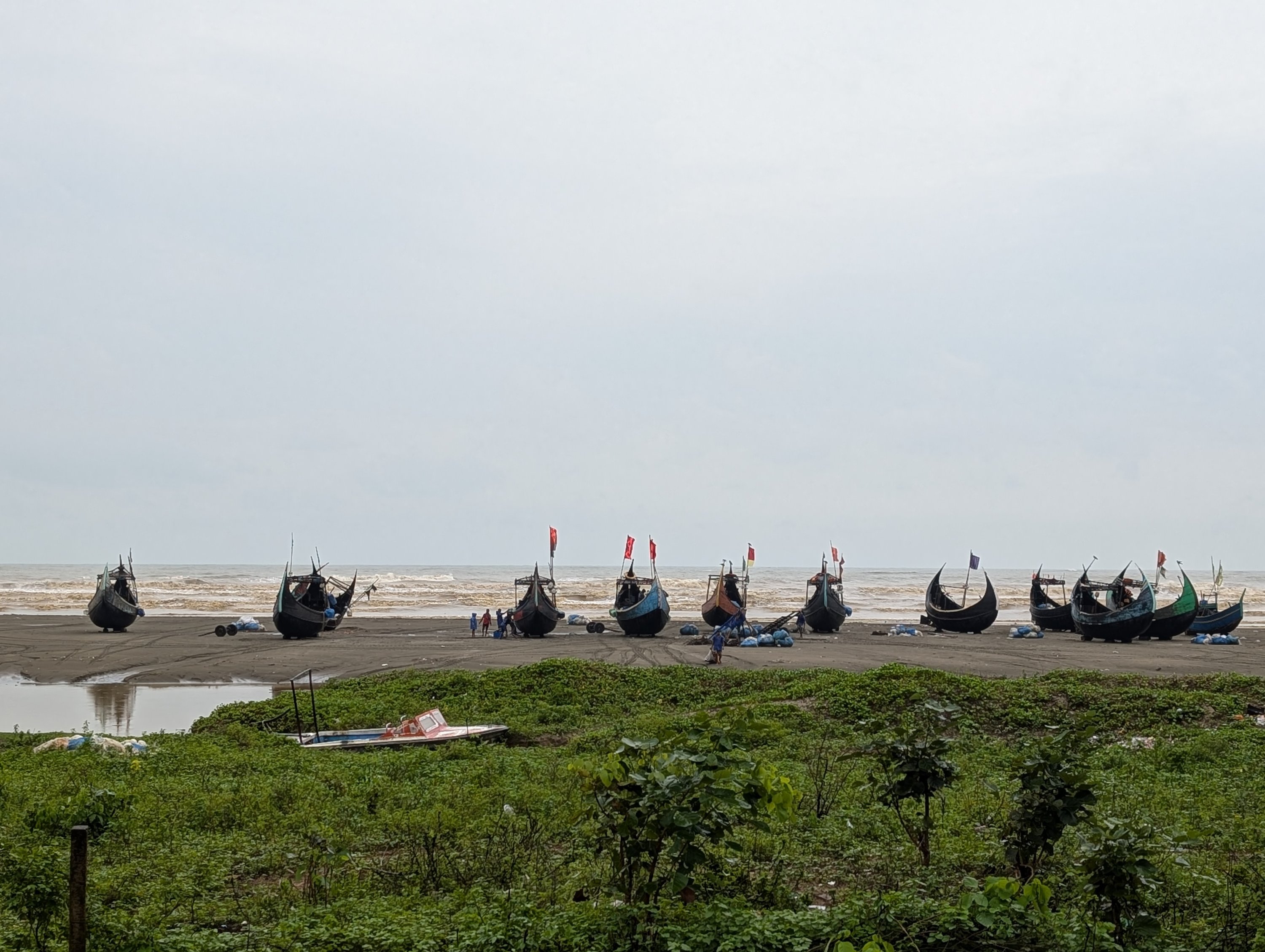
There were lovely sampan boats lined up in rows in specific locations. These traditional wooden boats pay homage to Bangladesh’s maritime heritage.
Due to the monsoon season, some excursions were suspended, the hotel’s tour desk informed me. I wanted to go on a day trip to St. Martin’s Island, Bangladesh’s only coral island in the Bay of Bengal. It is almost 10 kilometers from Teknaf on the mainland. Traveling to Teknaf itself, approximately 80 kilometers from Cox’s Bazar, means covering a significant portion of the longest beach and enjoying more of the region’s incredible scenery.
Lifestyle
Bodrum unveiled: Timeless escape on Türkiye’s turquoise coast
Bodrum is not just a destination: It’s a mood, a memory, a mirage of Aegean beauty that lingers long after summer fades. Nestled on the southwestern coast of Türkiye, Bodrum has long held its place as the ultimate seaside escape, effortlessly blending ancient history with contemporary luxury. Whether you arrive by yacht or by heart, the peninsula welcomes you with the scent of bougainvillea, the shimmer of turquoise waters and a rhythm that slows the soul.
Once home to the ancient city of Halicarnassus, Bodrum’s heritage runs deep – ruins of the Mausoleum of Halicarnassus, one of the Seven Wonders of the Ancient World, still whisper stories of forgotten kings. Yet today, Bodrum wears its past lightly. Cobbled streets wind past whitewashed houses with cobalt shutters. Fishermen mend their nets beside fashion boutiques and the call of seagulls blends with beats drifting from chic beach clubs.
The days here unfold like silk – smooth, languid and sun-drenched. Mornings begin with simit (Turkish bagel) and Turkish tea by the marina. Afternoons are for swimming in crystal coves; Küdür Bay, Paradise Cove (Cennet Koyu) and Bitez Beach are local favorites. As golden hour arrives, the town transforms. Sunset cocktails at Maçakızı or Mimoza in Gümüşlük are a must, where the horizon blurs into brushstrokes of orange and lavender.
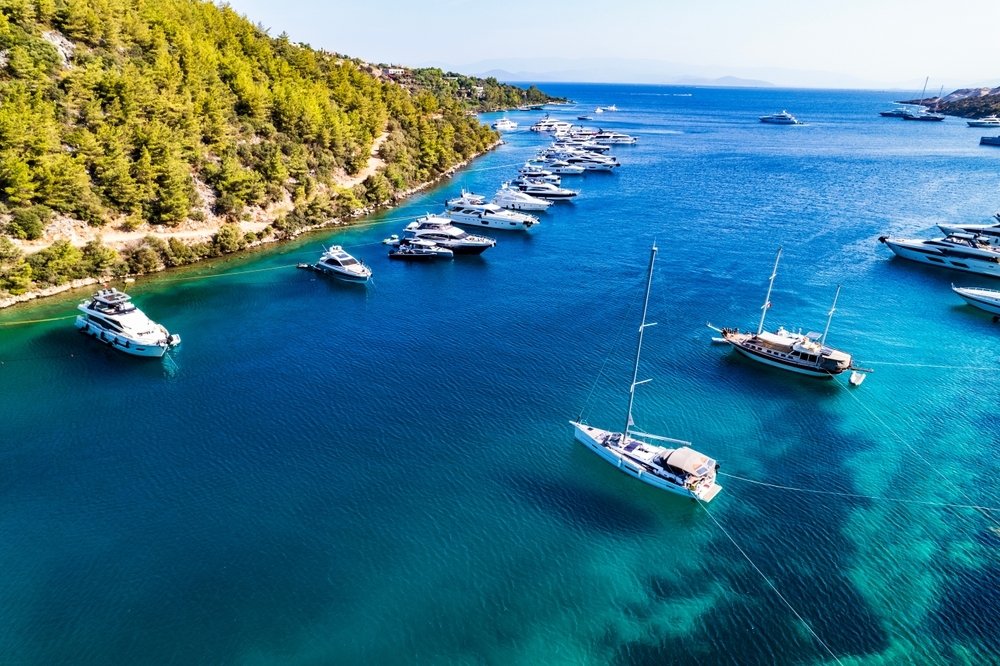
Bodrum’s nights are legendary. Whether it’s dining barefoot in the sand at Limon, dancing under the stars at Fenix, or watching the moon rise from the deck of a gulet, there’s a timelessness to the evenings here. Time doesn’t stop, but it certainly forgets to hurry.
And fashion? Bodrum has its own code. Think flowy linens, handmade sandals, silk scarves fluttering in the breeze. Jewelry that tells stories. A wardrobe that breathes like the sea. The style is as much about ease as it is about elegance – resort chic with a bohemian soul.
But beyond the luxury, the essence of Bodrum lies in its contradictions: ancient yet modern, vibrant yet serene, wild yet refined. It’s where you can lose yourself and find yourself all at once. It’s not just a summer place – it’s a state of being.
Bodrum is a reminder that beauty doesn’t need to shout to be heard. It just needs to shimmer.
Where to go
Bodrum is a peninsula of personalities – each bay, each village tells its own story. Here’s where to wander:
Bodrum Town
Start in the heart. The Bodrum Castle, built by the Knights of St. John, stands proudly between two harbors. Inside, the Bodrum Museum of Underwater Archaeology is a hidden gem. The marina is lined with elegant cafes, perfect for people-watching with an espresso or a chilled rose. By night, the old town pulses with energy – don’t miss the rooftop bars tucked behind stone alleys.
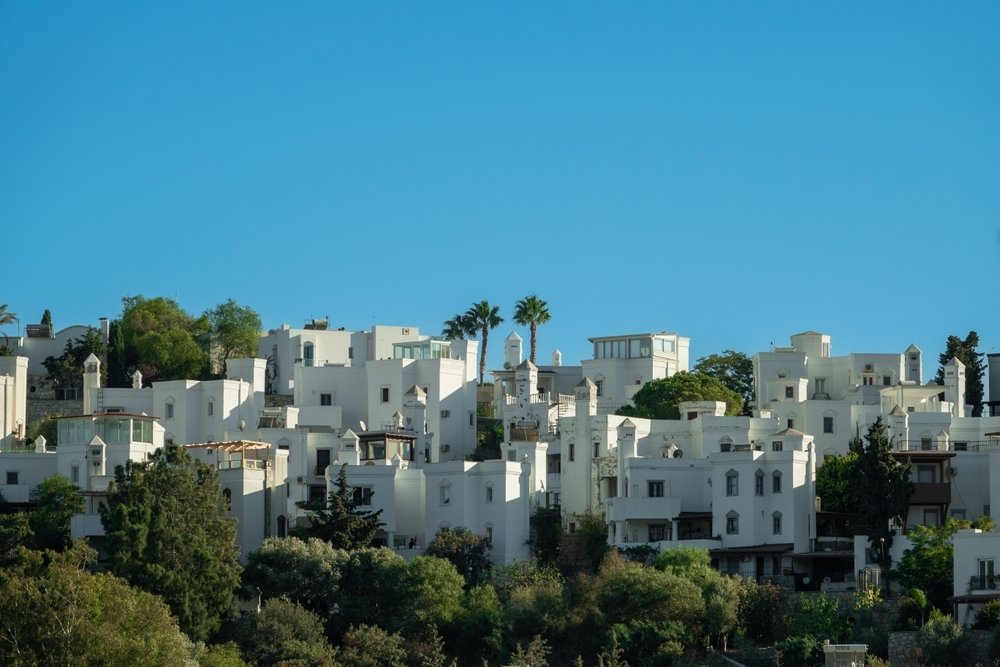
Gümüşlük
Romantic, rustic, and utterly charming. Walk along the sunken path to Rabbit Island at sunset or dine seaside with your feet in the sand. Limon, a garden restaurant overlooking the bay, offers unbeatable views and a bohemian atmosphere. Gümüşlük is also an artists’ haven – don’t leave without exploring the small ateliers and handmade ceramics.
Yalıkavak
Polished and glamorous, this is Bodrum’s answer to St. Tropez. The Yalıkavak Marina is home to superyachts, luxury boutiques (from Dior to local designers) and world-class restaurants. Zuma, Novikov and Lucca by the Sea all bring global flair. If you want to party, head to famous beach clubs like Bagatelle or Scorpios Bodrum (new and scene-stealing).

Türkbükü
Long the favorite of Turkish celebrities, Türkbükü’s wooden piers transform into beach lounges by day and candlelit dining spaces by night. Stay for a sunset aperitivo and a slow seafood dinner. It’s barefoot luxury at its finest.
Paradise Cove
Aptly named, this protected bay with clear water and pine-framed coves is ideal for a private swim or yacht escape. Best accessed by boat, but even from land, it feels like a hidden paradise.
Ortakent & Bitez
Less flashy, more relaxed. Ideal for long beach days, windsurfing and eating gözleme made by local women under olive trees. Bitez also has an up-and-coming dining scene, perfect for a quieter evening.
Mazı Village
For those who want Bodrum before the boom. Sleepy fishing villages, secret coves and olive orchards. A drive out here feels like stepping back in time. Come for the peace, stay for the magic.
Lifestyle
Zindan Cave: Türkiye’s hidden gem for history, nature lovers
Located in the Aksu district of Isparta, in Türkiye’s Mediterranean region, Zindan Cave has become an increasingly popular attraction for both local and international visitors. Opened to tourism 23 years ago, the cave offers a rare combination of historical richness, cool underground waters and stunning natural formations.
Perched at 1,300 meters (4,265 feet) above sea level, the 765-meter-long cave is home to remarkable archaeological remains, including a Roman bridge, the open-air Eurymedon Temple and a mosaic believed to depict the river goddess.
Inside the cave, visitors are immersed in a dramatic landscape of stalactites, stalagmites and towering columns – formed over thousands of years. The sound of water from an underground stream echoes through the cavern as it cascades over rocks, adding to the cave’s mystique.
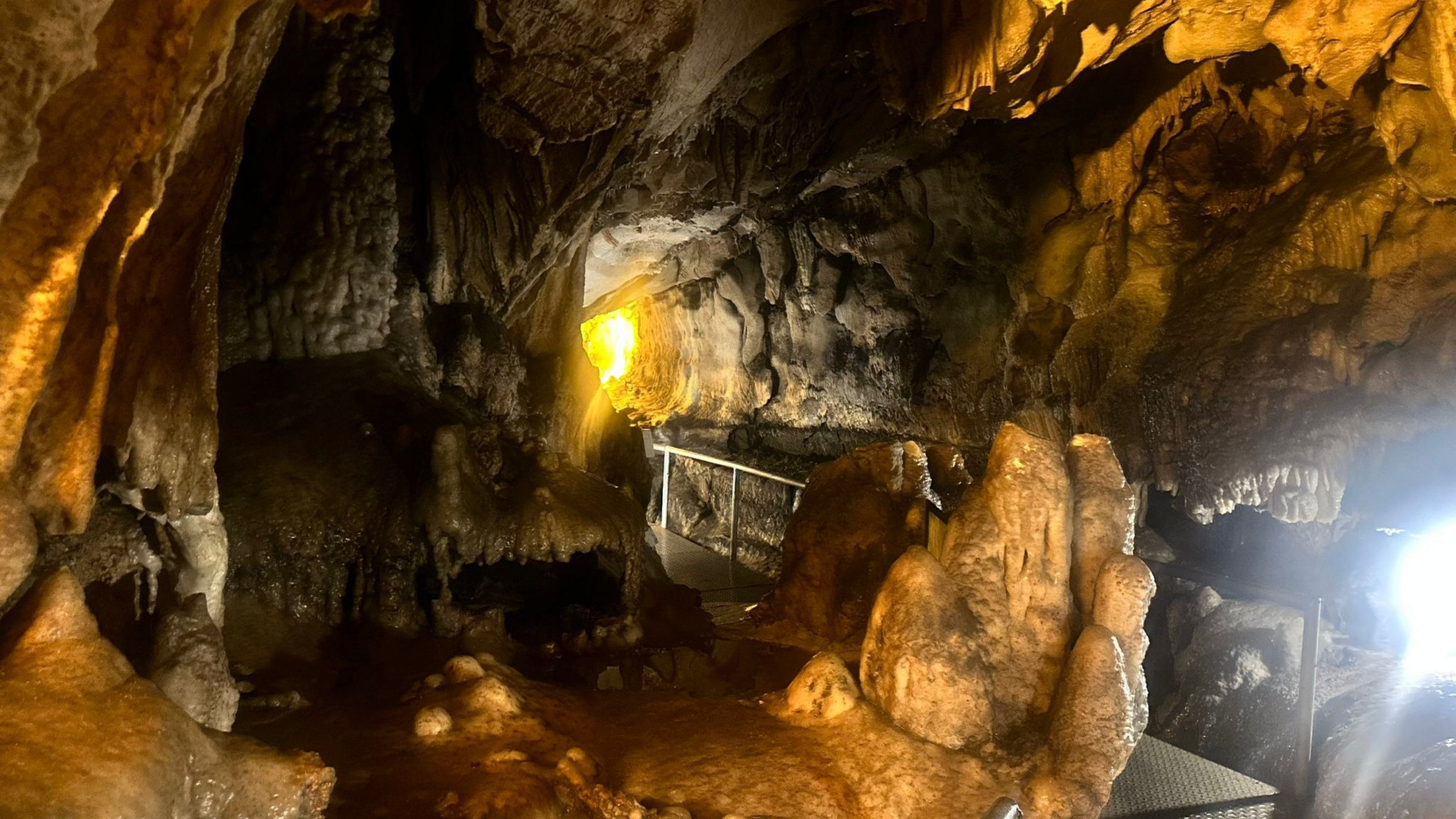
The mineral-rich stream, believed by locals to be beneficial for the skin, has been confirmed through scientific analysis to contain high levels of calcium and magnesium – further sparking interest among visitors.
Zindan Cave has served as a site of religious and cultural importance for various civilizations, including pagans, ancient Greeks and Romans. Despite centuries of change, the temperature inside remains a steady 5 degrees Celsius (41 degrees Fahrenheit) year-round, making it a refreshing retreat during the hot summer months.
One of the cave’s most striking features is the Eurymedon mosaic, made by hand from black, white and red stones. It greets visitors at the entrance, just beyond the historic Roman bridge. The site as a whole evokes the feel of an open-air museum, with engraved stones and columns scattered throughout.
Zindan Cave attracts nearly 50,000 visitors annually. Its walkways and lighting system, developed during its transformation into a tourist site, allow for safe exploration of its natural and archaeological wonders.
Aksu District Governor Salih Zafer Aydın highlighted the cave’s unique combination of historical, ecological and cultural significance. “Visitors first cross the Roman bridge, followed by ancient carved stones and the Eurymedon temple area. Just beside it lies the mosaic of the River Goddess, uncovered through archaeological excavations,” he explained.
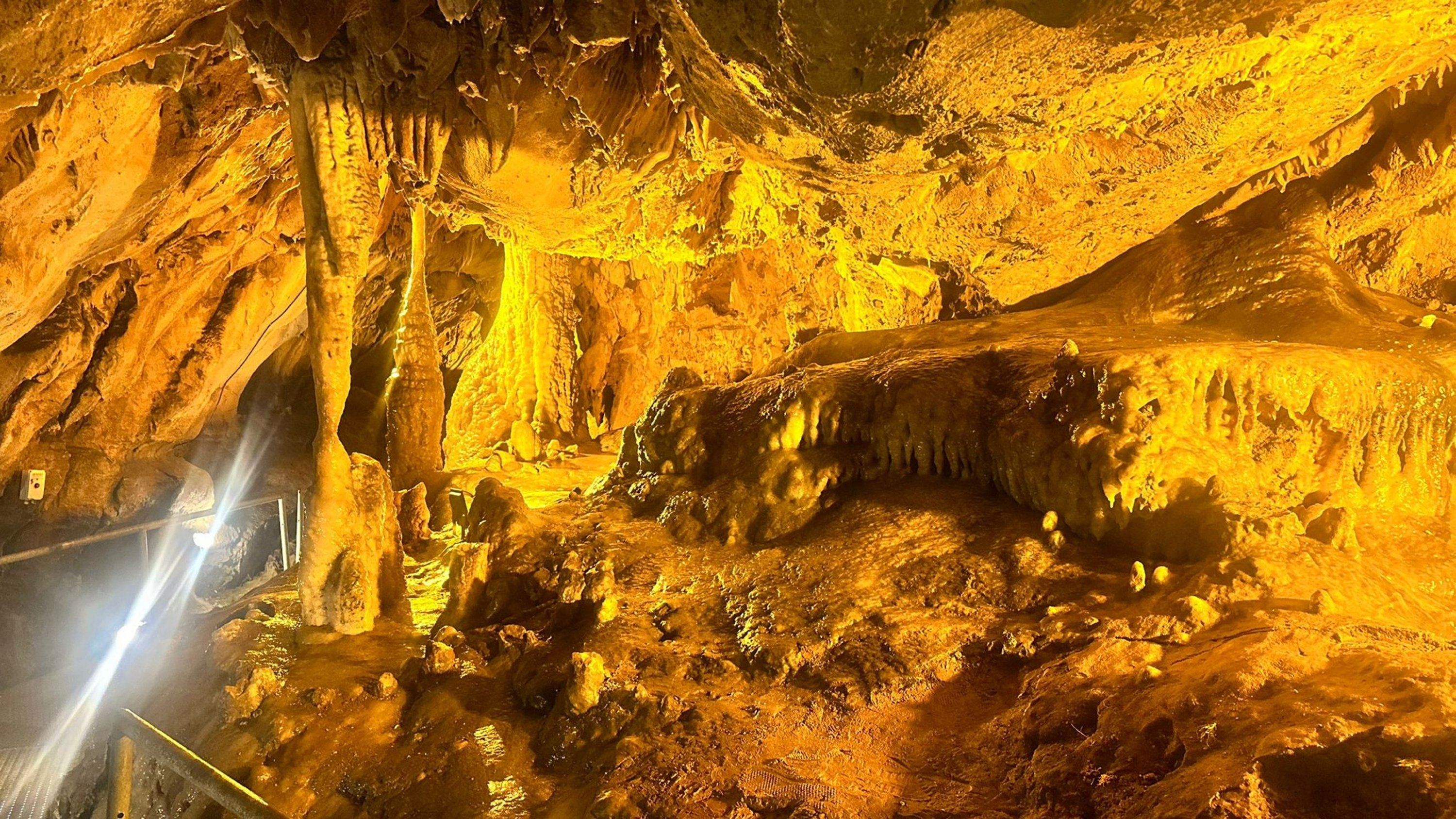
He noted that the far end of the cave features an area believed to have once served as a bath, where the mosaic is located. “There is a long-standing belief that the water flowing from this ancient bath is good for the skin. Scientific studies partially support this claim based on the water’s composition,” Aydın added.
Salih Ölmez, a visitor from Hatay, shared his experience: “When I heard about the cave, I had to come see it. It’s truly beautiful – with water still flowing inside. You can really feel the presence of different eras here. I highly recommend it to everyone.”
-
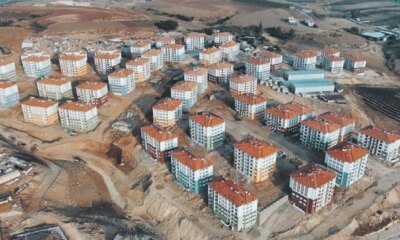
 Daily Agenda3 days ago
Daily Agenda3 days agoEarthquake houses are rising rapidly – Breaking News
-

 Politics3 days ago
Politics3 days agoJuly 15 association to expose coup, FETÖ facts in 54 countries
-

 Economy3 days ago
Economy3 days agoMeta to ban political ads in EU over ‘unworkable’ rules
-
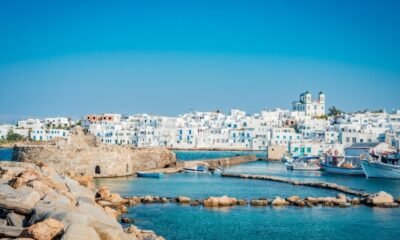
 Lifestyle3 days ago
Lifestyle3 days agoPlanning Paros: Traveler’s guide to Greece’s chicest island escape
-

 Politics3 days ago
Politics3 days ago‘State institutions in full coordination for terror-free Türkiye’
-

 Sports3 days ago
Sports3 days agoHamilton refuses to join list of F1 champs who fell short at Ferrari
-

 Daily Agenda2 days ago
Daily Agenda2 days agoMartyr Akut staff was sent off on their last journey
-
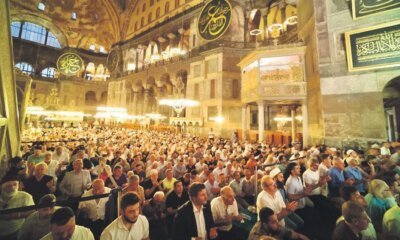
 Daily Agenda3 days ago
Daily Agenda3 days agoGaza prayer in Hagia Sophia – LAST MINUTE NEWS




